Dogs
Hey Julie,

And it’s some of The Ugly side of the science surrounding children and dogs that I want to share with you today. Dogs can hurt children and children can hurt dogs.
It’s ugly alright.
Dog bites are the most frequently reported type of animal bite to humans.
I emphasise most at risk, as obviously all people are at some risk of being bitten by any dog they encounter.
We don’t know the full story.
It’s not the full story, but research has shown that the age groups most at risk don’t pay attention to dogs’ body language but focus their attention on the face. Children do misinterpret angry dog facial expressions as smiling and being happy.
An eye-tracking research study showed that for some reason, young children’s’ eyes focus in on the angry dogs’ mouth and teeth area instead of following the usual eye-nose-mouth scan pattern that they show for other faces. This information offers an important insight that may be used to develop education strategies for children and their interactions with dogs.
Motivations for animal cruelty by children have been cited as:
Childhood experiences into adulthood:
Studies that utilised dogs (and other animals) with groups of children deemed 'at risk' of engaging in anti-social behaviours have found that programs comprising a mix of discussions of interpersonal issues and conflict management along with the proper care and obedience training of dogs (and other animals) have demonstrated decreased fear of dogs/animals and improved attitudes towards self and others – sound familiar?
It’s The Good shining through, even in the face of The Ugly!
Further reading:
Meints K., Allen K. & Watson C. (2011). Atypical face-scan patterns in children misinterpreting dogs facial expressions evidence from eye-tracking, Injury Prevention, 16 (Supplement 1) A173-A173. DOI: 10.1136/ip.2010.029215.619
Shewell P.C. & Nancarrow J.D. (1991). Dogs that bite., BMJ, 303 (6816) 1512-1513. DOI: 10.1136/bmj.303.6816.1512
Reisner I.R., Shofer F.S. & Nance M.L. (2007). Behavioral assessment of child-directed canine aggression, Injury Prevention, 13 (5) 348-351. DOI: 10.1136/ip.2007.015396
Weiss H.B. Incidence of Dog Bite Injuries Treated in Emergency Departments, JAMA: The Journal of the American Medical Association, 279 (1) 51-53. DOI: 10.1001/jama.279.1.51
Ozanne-Smith J., Ashby K. & Stathakis V.Z. (2001). Dog bite and injury prevention--analysis, critical review, and research agenda., Injury prevention : journal of the International Society for Child and Adolescent Injury Prevention, 7 321-326. PMID: 11770660
Avner J.R. & Baker M.D. (1991). Dog bites in urban children., Pediatrics, 88 (1) 55-57. PMID: 2057274
Ascione F.R. (1993). Children Who are Cruel to Animals: A Review of Research and Implications for Developmental Psychopathology, Anthrozoos: A Multidisciplinary Journal of The Interactions of People & Animals, 6 (4) 226-247. Other: Link
Currie C.L. (2006). Animal cruelty by children exposed to domestic violence, Child Abuse & Neglect, 30 (4) 425-435. DOI: 10.1016/j.chiabu.2005.10.014
ARLUKE A., LEVIN J., LUKE C. & ASCIONE F. (1999). The Relationship of Animal Abuse to Violence and Other Forms of Antisocial Behavior, Journal of Interpersonal Violence, 14 (9) 963-975. DOI: 10.1177/088626099014009004
McPhedran S. (2009). Animal Abuse, Family Violence, and Child Wellbeing: A Review, Journal of Family Violence, 24 (1) 41-52. DOI: 10.1007/s10896-008-9206-3
Duncan A. & Miller C. (2002). The impact of an abusive family context on childhood animal cruelty and adult violence, Aggression and Violent Behavior, 7 (4) 365-383. DOI: 10.1016/S1359-1789(01)00064-7
Zasloff L.R., Hart L.A. & Weiss J.M. (2003). Dog training as a violence prevention tool for at-risk adolescents, Anthrozoos: A Multidisciplinary Journal of The Interactions of People & Animals, 16 (4) 352-359. DOI: 10.2752/089279303786992044
Doogan S. & Thomas G.V. (1992). Origins of fear of dogs in adults and children: The role of conditioning processes and prior familiarity with dogs, Behaviour Research and Therapy, 30 (4) 387-394. DOI: 10.1016/0005-7967(92)90050-Q
© Mia Cobb 2012
- Dogs In Review: May 2013
Canine Science! Everywhere! AHHH! (source) Hey Mia!Didn’t May come and go in a flash? Is it possible to ask for an extension? The world of canine science was bopping last month, so here’s a review of things I would have liked to cover in more...
- Dogs And Babies: Not Always Cute
Hi Mia, Oh, Arf! Based on the way I treated him, it's a good thing he was stuffed. I remember dragging him around by his leg (or maybe it was his ear) so we could "spend time" together. Given he was a stuffed animal, I have to admit it's...
- The Science Surrounding Children & Dogs: Part 1 (the Good)
(source)Hi Julie, Oh my, but KAWAII is cute! I guess that’s kind of the point? I love that cute is good for us. All this talk of cute, a website and some observations at home got me thinking this week. I recently saw this image posted on Facebook...
- Kids & Pets – Tips For Preventing Dog Bites
By Suzanne Alicie As a responsible pet owner, I have to be diligent in making sure that my dog Bear doesn’t bite someone. When we go for a walk most adults know how to approach a strange dog, or at least know better than to run up squealing and jumping...
- Good Dog Breeds For Families
Everyone has their preferences on great dog breeds,but you have to admit that not all dogs are created equal. Some breeds are more prone to violence and dog bite claims than others. Have you or a friend ever been bitten by a dog? It certainly hurts, but...
Dogs
The Science Surrounding Children & Dogs: Part 3 (The Ugly)
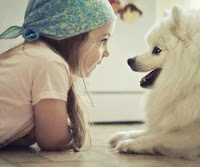 |
| Cute or feeding an unrealistic fantasy? (source) |
You raise such an important point!
In the same way that popular culture can influence our perceptions and interpretations of ‘cute’ in domains like body image and kawaii, photos of babies with dogs can set us up with unrealistic expectations that might lead to ugly situations and devastating outcomes.

And it’s some of The Ugly side of the science surrounding children and dogs that I want to share with you today. Dogs can hurt children and children can hurt dogs.
It’s ugly alright.
Dogs biting kids:
As you pointed out in your last post, part of the The Ugly is that dogs can and do bite babies and kids.
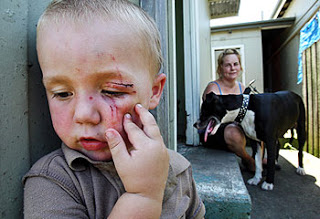 |
| (source) |
The risk factors for being bitten vary a little from study to study (as you'd expect given each study looks at a different population), but generally, it’s consistent that the kids most at risk were:
- Aged five years or under (with the 5-10yr age group a close second);
- Attempting to access the dog’s territory or a resource (toy/food/bone, etc.) sometimes with the dog on lead or chained in a yard, or
- Provoking the dog (by stepping on; pulling the dog’s hair/ears; hitting or attempting to ‘discipline’ the dog or waking a sleeping dog);
- At home or in a friend’s/neighbour’s/relative’s house (i.e. a dog known to the child and generally in the dog’s home environment)
- Not directly supervised by an adult.
- Boys appear more likely to be bitten by dogs not from their own households, but boys and girls have been shown to be bitten equally by dogs from their own households.
 |
| From Reisner et al., 2007 (source) |
 |
| (source) |
I emphasise most at risk, as obviously all people are at some risk of being bitten by any dog they encounter.
Dogs involved often have no prior history of biting children, although some have previously bitten adults or other animals.
We don’t know the full story.
Most figures regarding dog bites coming from hospital reports or other health authorities. It’s been calculated that in the USA, over 900 dog bite injuries are treated in hospital emergency departments each day. The same study estimated that for every dog bite fatality; there are approximately 16,000 dog-bite related emergency department visits. Just staggering figures!
 |
| (source) |
And yet, dog bites are most likely under-reported. Not all dog bites get treated at hospital and as such, many cases may go unreported.
A study from the 1980’s demonstrated that nearly half of 3,000 children (aged 4-18) surveyed reported being bitten by a dog in their lifetime.
More than 36 times the rate reported to authorities!
A study from the 1980’s demonstrated that nearly half of 3,000 children (aged 4-18) surveyed reported being bitten by a dog in their lifetime.
More than 36 times the rate reported to authorities!
Identification of the dog breeds involved is probably inaccurate. Dog breed identification for dogs involved in attacks are usually self-reported to health authorities by the victim or victim’s family. Recent research has demonstrated how hard it is for even dog experts to accurately identify dog breeds, so can you see where there might be an issue in the validity of this data?
Why are young kids at such high risk of being bitten?
 |
| (source) |
 |
| "My, what big teeth you have..." |
Kids abusing dogs:
The notion of children deliberately inflicting pain or suffering on dogs and other animals is distressing.
But it happens.
But it happens.
A symptom of other problems
Children who abuse animals are reportedly twice as likely to have experienced sexual or physical abuse themselves compared to children who are not cruel to animals.
They often come from households of domestic/family violence.
They often experience parental alcoholism/unavailablility.
Violent behaviour is believed to be learned by these children as a viable tool in relationships (i.e. this is how you relate to others) and/or is modelled from adult behaviour they have directly observed.
Exerting ‘power’ over an animal may also assist children who feel otherwise powerless in such situations of family violence.
They often come from households of domestic/family violence.
They often experience parental alcoholism/unavailablility.
 |
| (source) |
Violent behaviour is believed to be learned by these children as a viable tool in relationships (i.e. this is how you relate to others) and/or is modelled from adult behaviour they have directly observed.
Exerting ‘power’ over an animal may also assist children who feel otherwise powerless in such situations of family violence.
It's incredibly sad. For everyone. The children and the dogs.
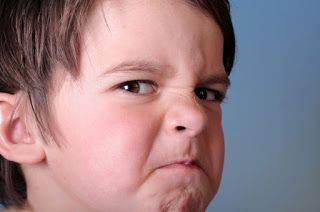 |
| (source) |
- displaced hostility against a person to an animal;
- expression of aggression;
- post-traumatic play; and
- to hurt someone else by hurting a animals (using the animal as a vehicle for emotional abuse).
Animal abuse as a child lead to..?
Research has demonstrated associations between acts of childhood cruelty to animals and acts of serious, recurrent, interpersonal aggression/violence and other generalised anti-social behaviours as adults.
Although it is tempting to suggest that animal cruelty exhibited in childhood leads to interpersonal violence in adulthood, it is considered a better conclusion that childhood home environment is a strong predictor of the development of many violent behaviours, often clustered together.
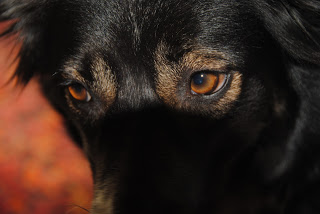 |
| (source) |
Childhood experiences into adulthood:
Most fearful adults report their fear of dogs began in childhood. However, being attacked as a child doesn’t necessarily mean you will be fearful of dogs as an adult.
Most adults are dog-fearful following a direct experience of dog bite rather than being influenced by an attack event that happened to someone they knew or from verbal information/education passed to them by others.
Amazingly, being bitten as a child has not been associated with a dislike of dogs. Positive experiences with dogs prior to being bitten made children less likely to become dog-phobic adults. It’s not fully understood why some children can recover and others retain their fearfulness into adulthood, sometimes even suffering ongoing PTSD.
Most adults are dog-fearful following a direct experience of dog bite rather than being influenced by an attack event that happened to someone they knew or from verbal information/education passed to them by others.
Amazingly, being bitten as a child has not been associated with a dislike of dogs. Positive experiences with dogs prior to being bitten made children less likely to become dog-phobic adults. It’s not fully understood why some children can recover and others retain their fearfulness into adulthood, sometimes even suffering ongoing PTSD.
| (source) |
It’s The Good shining through, even in the face of The Ugly!
So there you have it Julie.
Some of the science surrounding children and dogs: the good, the bad and the ugly.
I’m really hoping you can tell me about something fun and frivolous in your next post!
Mia
 |
| What hasn't been in any other image I've used in these three posts? Parental supervision! (source) |
Further reading:
Meints K., Allen K. & Watson C. (2011). Atypical face-scan patterns in children misinterpreting dogs facial expressions evidence from eye-tracking, Injury Prevention, 16 (Supplement 1) A173-A173. DOI: 10.1136/ip.2010.029215.619
Shewell P.C. & Nancarrow J.D. (1991). Dogs that bite., BMJ, 303 (6816) 1512-1513. DOI: 10.1136/bmj.303.6816.1512
Reisner I.R., Shofer F.S. & Nance M.L. (2007). Behavioral assessment of child-directed canine aggression, Injury Prevention, 13 (5) 348-351. DOI: 10.1136/ip.2007.015396
Weiss H.B. Incidence of Dog Bite Injuries Treated in Emergency Departments, JAMA: The Journal of the American Medical Association, 279 (1) 51-53. DOI: 10.1001/jama.279.1.51
Ozanne-Smith J., Ashby K. & Stathakis V.Z. (2001). Dog bite and injury prevention--analysis, critical review, and research agenda., Injury prevention : journal of the International Society for Child and Adolescent Injury Prevention, 7 321-326. PMID: 11770660
Avner J.R. & Baker M.D. (1991). Dog bites in urban children., Pediatrics, 88 (1) 55-57. PMID: 2057274
Ascione F.R. (1993). Children Who are Cruel to Animals: A Review of Research and Implications for Developmental Psychopathology, Anthrozoos: A Multidisciplinary Journal of The Interactions of People & Animals, 6 (4) 226-247. Other: Link
Currie C.L. (2006). Animal cruelty by children exposed to domestic violence, Child Abuse & Neglect, 30 (4) 425-435. DOI: 10.1016/j.chiabu.2005.10.014
ARLUKE A., LEVIN J., LUKE C. & ASCIONE F. (1999). The Relationship of Animal Abuse to Violence and Other Forms of Antisocial Behavior, Journal of Interpersonal Violence, 14 (9) 963-975. DOI: 10.1177/088626099014009004
McPhedran S. (2009). Animal Abuse, Family Violence, and Child Wellbeing: A Review, Journal of Family Violence, 24 (1) 41-52. DOI: 10.1007/s10896-008-9206-3
Duncan A. & Miller C. (2002). The impact of an abusive family context on childhood animal cruelty and adult violence, Aggression and Violent Behavior, 7 (4) 365-383. DOI: 10.1016/S1359-1789(01)00064-7
Zasloff L.R., Hart L.A. & Weiss J.M. (2003). Dog training as a violence prevention tool for at-risk adolescents, Anthrozoos: A Multidisciplinary Journal of The Interactions of People & Animals, 16 (4) 352-359. DOI: 10.2752/089279303786992044
Doogan S. & Thomas G.V. (1992). Origins of fear of dogs in adults and children: The role of conditioning processes and prior familiarity with dogs, Behaviour Research and Therapy, 30 (4) 387-394. DOI: 10.1016/0005-7967(92)90050-Q
© Mia Cobb 2012
- Dogs In Review: May 2013
Canine Science! Everywhere! AHHH! (source) Hey Mia!Didn’t May come and go in a flash? Is it possible to ask for an extension? The world of canine science was bopping last month, so here’s a review of things I would have liked to cover in more...
- Dogs And Babies: Not Always Cute
Hi Mia, Oh, Arf! Based on the way I treated him, it's a good thing he was stuffed. I remember dragging him around by his leg (or maybe it was his ear) so we could "spend time" together. Given he was a stuffed animal, I have to admit it's...
- The Science Surrounding Children & Dogs: Part 1 (the Good)
(source)Hi Julie, Oh my, but KAWAII is cute! I guess that’s kind of the point? I love that cute is good for us. All this talk of cute, a website and some observations at home got me thinking this week. I recently saw this image posted on Facebook...
- Kids & Pets – Tips For Preventing Dog Bites
By Suzanne Alicie As a responsible pet owner, I have to be diligent in making sure that my dog Bear doesn’t bite someone. When we go for a walk most adults know how to approach a strange dog, or at least know better than to run up squealing and jumping...
- Good Dog Breeds For Families
Everyone has their preferences on great dog breeds,but you have to admit that not all dogs are created equal. Some breeds are more prone to violence and dog bite claims than others. Have you or a friend ever been bitten by a dog? It certainly hurts, but...
